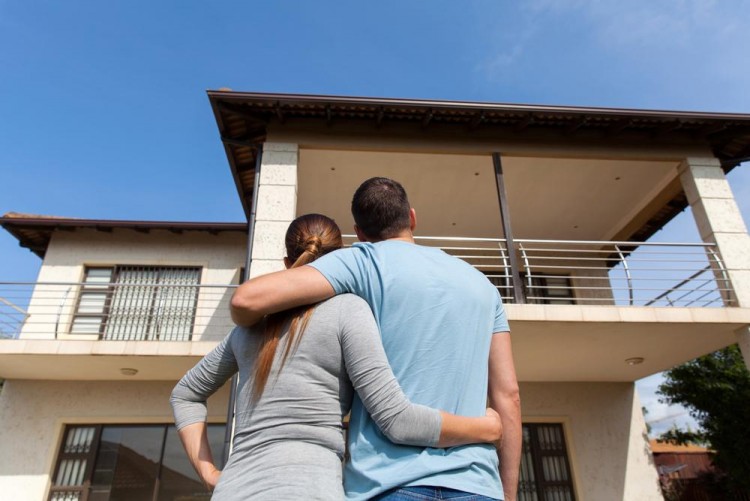Moving to a new home comes with lots of anticipation and anxiety, and a quiet belief that everything will be perfect because it’s like a new phase of life. However, it also comes with a little bit of stress. From packing of luggage, and getting the kids or pets (if any) ready, to finding a reliable moving company to transfer your valuables, you need to ensure that everything is in order to make the experience easier.
However, you need to go over to the new place and double check the painting, installations, and overall landscape to ensure optimal satisfaction before your moving date. Here are some useful tips to guide you all through the process.
What to Do Before You Move
1. Inspect your new home
Before you move into your new home, it’s wise you walk around and ensure that every feature you saw before buying (or renting) the property is still as it was. If you had changed some, test run them and make further adjustments – if necessary.
However, newly built homes have a lot of untouched elements that are put together to give it that attractive look. From the fresh paint, properly mowed lawn, climate systems and flooring, to kitchen fixtures, cabinets, bath tub, electronics and other appliances, the unique combination should not make you believe that everything works perfectly. Check every feature One after the other before moving.
If your house is too big for you to inspect all by yourself, you can bring some friends or family members along to help you out. Better yet, professional inspectors can easily spot defects that nobody else would have noticed easily. A walk-through with the builder of your new home can be done after you have conducted your own checks. But an expert will know where to look and what to look out for in both the functions and structure of different fixtures in any type of house.
Furthermore, walking through your new home isn’t just for you to notice defects and loose spots. A builder for example, can show you how the new heating system works, where to turn off the alarm, amongst other functionalities. While an inspector on the other hand, can suggest ways to upgrade your security system, what features to change, and even how to conduct proper checks.
Make a punch list of things to change or fix – while walking through the house. Broken tiles, loose fixtures and cabinet handles should go into the list. If you are expecting an element that is customised for a specific use, you can include that as well. With this list, it will be easy to check out repairs or features that have been sorted – making your work easier.

If you feel there’s no need for an inspector or you can’t afford one, then make enough time to walk through the house and ensure that every element is in its right position – before moving. Although, there are some things you won’t mind living with – and probably fixing over a period of time.
After your final inspection and walk-through, test the all the elements to make sure you understand how they work. From the basic utilities like lighting and water to heating and cooling systems, ensure that you are satisfied with the functionalities – then you can move.
2. Get rid and get ready
Not everything you own should be taken to the new house. If you have some broken or old items like furniture, cooking utensils, shelves, and even clothing, get rid of them. You will have less items to pack (and unpack), saving you time and extra cost of moving to your new home.
An expert from Admovers – a moving company in New Orleans – suggested that those who feel bad about throwing away old or excess items can donate them to charity organizations. He further added that “asides the fact that some of these items might not be environmental friendly, some people do not even know where to stash unwanted electrical or furniture items.”
Make a mental note or a list to remind you of where to place certain items in the house. Marking boxes with names of areas in the home where its contents should be, can help guide you. If you do not want anyone to know where certain boxes or content should go, you can use stickers or as many colors as you wish to mark them. This makes it easy for you to take boxes where they belong once you move in.
There’s a possibility you won’t finish unpacking the same day you move. Therefore, put all beddings into a different box that you can easily identify – find it and sleep when you get exhausted.
Before the moving day, go over to the new house and cover the carpet, wood or tiles on the walking path with heavy-duty building paper. This helps prevent any damage that comes from moving objects around the house on that day. Make sure that heavier items are either packed in smaller boxes or beneath lighter items. It helps you lift everything without worries of breaking any valuables.
What to Do the Day you Move
If you have a checklist or a moving list, it will help you get through the process with less stress. If there are pets or kids (or even both), put a friend or family member in charge of them for the duration your move will last. Your pets should be the last to move.

“It’s advisable to take in the heavy items before the lighter ones – when you get to the new house. Furniture and gigantic electronics should be first set up, then decorating, utensils and smaller items can come in afterwards.” the Admovers expert stated. He further explained that if you are hiring a moving company, you can let them carry and place all items and boxes where you want them to be.
When everything has been taken inside, you can now let the kids and pets in.
What to Do After You’ve Moved
As stated earlier, keep a punch list of elements you are expecting – and when they are meant to arrive. If there are things you can live with, put them in a manageable condition.

If it’s a new house you can call the service company and fix a date for when they’ll come repair any loose fixture that is still under warranty.
You can take a walk later in the day to meet new neighbors and ask them questions concerning security, weather conditions and other important matters. This goes a long way to help you plan yourself especially if it’s a new area you aren’t conversant with.
Tip: it’s best to move on the weekend, so that you won’t worry about work (or school) when you wake up the next morning to continue unpacking or decide to change the position of furniture.
Once you have settled in, make yourself a nice meal or a cup of tea – and enjoy your new home.




